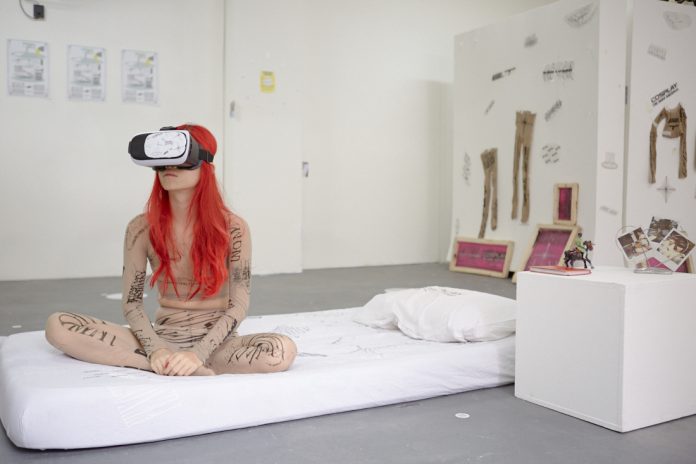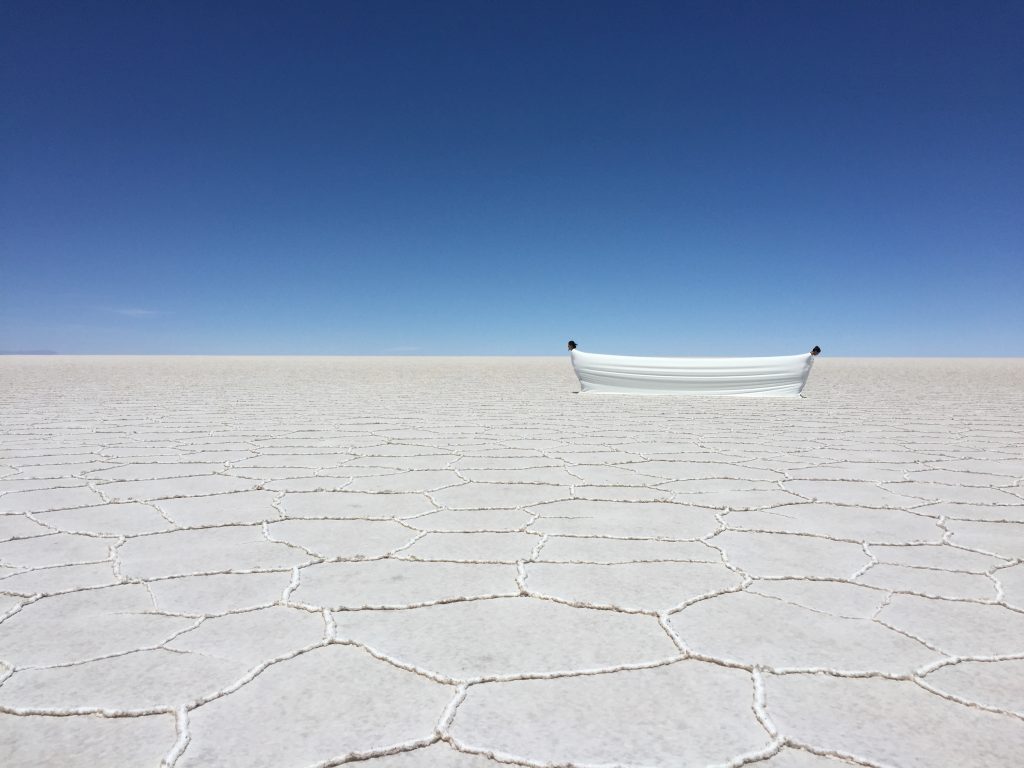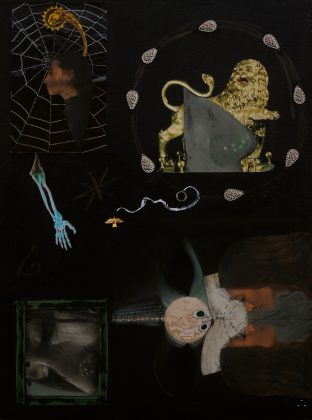

NIn recent years, the debate on prejudices and the inclusion of minorities has come to occupy a growing space in the arts circuit. However, little is heard about the inclusion (or exclusion) of Asian-Brazilian people in these environments.
In a world that was surprised by a pandemic in 2020, the fact that the coronavirus (Covid-19) started in China has generated a xenophobic movement around the globe with people of different Asian descent. In Brazil, it was no different. However, as the transdisciplinary artist Cyshimi points out, “the issues that permeate Asian-Brazilians are not new”, they started much earlier and go far beyond the virus.
In issue #51 of arte!brasileiros, Luciara Ribeiro brought a reflection on the subject (read by clicking here): “We always need to ask ourselves why we racialize certain populations and assign them specific terms, such as Afro-Brazilians, Brazilian Indians or Asian-Brazilians: is it because we recognize the so-called Euro-Brazilian art as just Brazilian art?”. For Shima, winner of the PIPA Award 2013, this is an essential point of discussion. “We will be born and die Asians in Brazil, no matter how Brazilian we feel. I know that I will never be called upon to represent a 'Brazilian art'”, he says.
In this edition, we decided to look specifically at Brazilian art made by Asian-Brazilians, the prejudices that surround it, the struggle that permeates it and its possibilities. To introduce this discussion, we spoke with artists, researchers and curators of different backgrounds.
“Instead of fighting for recognition, I looked for factors of identity and belonging in my experiences so that I could at least belong to myself. The unspeakable is before my eyes and I also find in my production some antidote to this toxic environment that they offer us to exist”, says Shima
Is there prejudice against Asian-Brazilians?
Asia is the largest continent and the one with the highest density.population age in the world. There are 50 countries with different phenotypes, ethnicities and cultures. However, as artists and activists point out, in Brazil there is still a direct association of Asia with Japan and a reduction to East Asia. “The homogenization of Asian ethnicities carries traces of colonialism by simplifying and objectifying diverse bodies, identities and cultures and, with this, motivates the loss of memory and assimilation of peoples”, explains the artist, researcher and curator. Caroline Ricca Lee. juily manghirmalani, audiovisual artist and researcher of Bollywood cinema, highlights that it is because of this homogenization that people commonly forget that there are also people of Indian, Southeast Asian and Middle Eastern origin in the Asian and Asian-Brazilian spectrum.
To Youssef Cherem, researcher and professor of art history of the OrieMiddle School at the Federal University of São Paulo (Unifesp), that This reduction is linked to a lack of popular knowledge of world cartography. Julie joins in the chorus. In his view, art can play an important role in the dissolution of these stereotypes, bringing greater knowledge about these different cultures. “People's lack of repertoire about other realities and expressions ends up creating a distance between ethnicities. Art is 100% intertwined with the lack of cultural exchange.”
Shima's ideas are in line with this thought: “The silencing of dissonant voices that bring a diversity and plurality of interpretations/reflections, lead us to a shallow society in thought, without self-criticism, without action, unison, monotonous. Cultural production and its artistic manifestations offer us parameters to say where I am, who I am, and where I am going.” One The first step for art to fulfill this role and actually facilitate this exchange, for Youssef, starts from understanding it beyond the stereotypes of each region: “For example, why think that the most important or most interesting thing about people in the world? Is the Middle East a religion? Seeing only that side closes us off to other relevant experiences,” he says.
It is in this aspect that Caroline, Cyshimi, the artist and art educator Alice Yura and visual artist Singh Bean think about decoloniality alongside the art they make, and that's why they wrote a manifesto in 2020 relating contemporary Asian art to decolonial thoughts. “Art and decoloniality dialogue in the possibility of bringing up counter-hegemonic narratives, when artists, through their productions, reveal contexts that make this 'turn of gaze' on our memory, culture and sociability”, explains Caroline.
But how does this actually work? According to Cyshimi, it can take place by opposing the idea of an ancestry that is only fetishized and celebrated, politicizing identities. As Caroline complements, thinking about an artistic discourse that is not satisfied only in the single report, but proposes to discuss collective and social issues and goes beyond defining identity is also part of this movement, “because in decoloniality an opposition to colonial history is intrinsic, imperialist, patriarchal and normative”, explains the artist. In this way, they propose that the discussion expands not only to the Asian-Brazilian agenda, but to the inclusion of dissident bodies as a whole, with their intersectionalities.
in the art world
It is at this point that we enter the arts circuit and begin to reflect on the representation present in it. For the multimedia artist, musician, performer and teacher Dudu Tsuda, “the Brazilian art system is a reflection of our society, structurally racist and centered on European and North American white culture. It reflects the socio-political-economic-cultural power structures, hegemonically dominated by whiteness”.
“Coming from cultures so opposed to whiteness has made me see the world more cautiously, more empathically, more enraged and more ambitious. I take my expectations of social change into what I produce”, says Juily Manghirmalani.
According to Cyshimi, this is one of the points that makes representation difficult in art institutions and in the media. “I miss that these institutions and vehicles also see us more deeply, trying to get to know the multiplicity of our individual productions and not just placing us as a category”, he says. For Dudu Tsuda, this posture does not mean that there is no effort at inclusion on the part of the institutions, but it is linked to the absence of Brazilian Asians in positions of power in these spaces. “What we always have left is a look of whiteness for our bodies and artistic works.” For both, this ends up resulting in an exoticism and a romanticization of racialized identities.
Singh Bean believes that this view of the arts circuit often limits racialized identities rather than actually representing them. “Sometimes it seems that we are called to expose ourselves to be a totem of the sufferer. I don't want to be in that totem place only, I'm not just that, I also deserve a place to talk about whatever I want”, he explains. The artist says that she has already questioned herself about the relevance of her work, “as if it only had relevance if it was political”, but realizes that this is not a demand for white people.
For Caroline and Dudu, one way to avoid this fetishistic or limiting view of dissident bodies is the presence of non-white people in the curatorship and command of institutions. To which the curator Yudi Rafael adds: “If systematic work is not being done by art institutions in Brazil, in this area, what exists today, in more engaged terms, are independent initiatives that are articulating a field of questions and building platforms to discuss them”.
Under a critical and dissident gaze
For Yudi, understanding this plurality and the Asian-Brazilian issue involves research and dialogue on the part of curators and institutions. “Without a historical and critical perspective, Asian-Brazilian is 'confused' with Asian. So there is a lack of understanding that talking about Brazilian Asians is talking about Brazil”, he explains.

In this aspect, it becomes necessary to broaden the understanding of racial relations in Brazil, understanding that the myth of the three races does not make sense when we have so many plural ethnicities making up the country. “We don't go through the structural racism that black people go through, but obviously we're not white people,” says Cyshimi. To which Caroline adds: “It is a fact that Brazilian society is a population with a black majority and land belonging to native peoples, so it is necessary that such narratives are always privileged and praised. Anti-racist solidarity needs to be a practice applied on a daily basis”. Both agree that it is only through anti-racist solidarity that it will be possible to understand how Asian-Brazilian issues take place in Brazilian territory.
In this sense, Juily believes that “the moment of ethnic recognition that we are experiencing through belonging and pride in our origins, so different from previous generations who were colonized to feel shame and fear, is still very recent. It is necessary to teach, open channels of conversation, make alliances, grow in the community”. This makes it clear to us that this conversation here at arte!brasileiros it is just a beginning, a first and small step towards these dialogues.
Youssef adds that it is necessary to create these dialogues in a critical and in-depth way, in addition to “sugar speeches”. For this, art can be a way, advancing the discussions in a more hermetic and close way, as proposed by Cyshimi: “I believe that this is one of my favorite things in making art, because of the way political and hermetic issues become closer together. , human and real, which encompasses and pluralizes the imagination on a certain subject”.

















